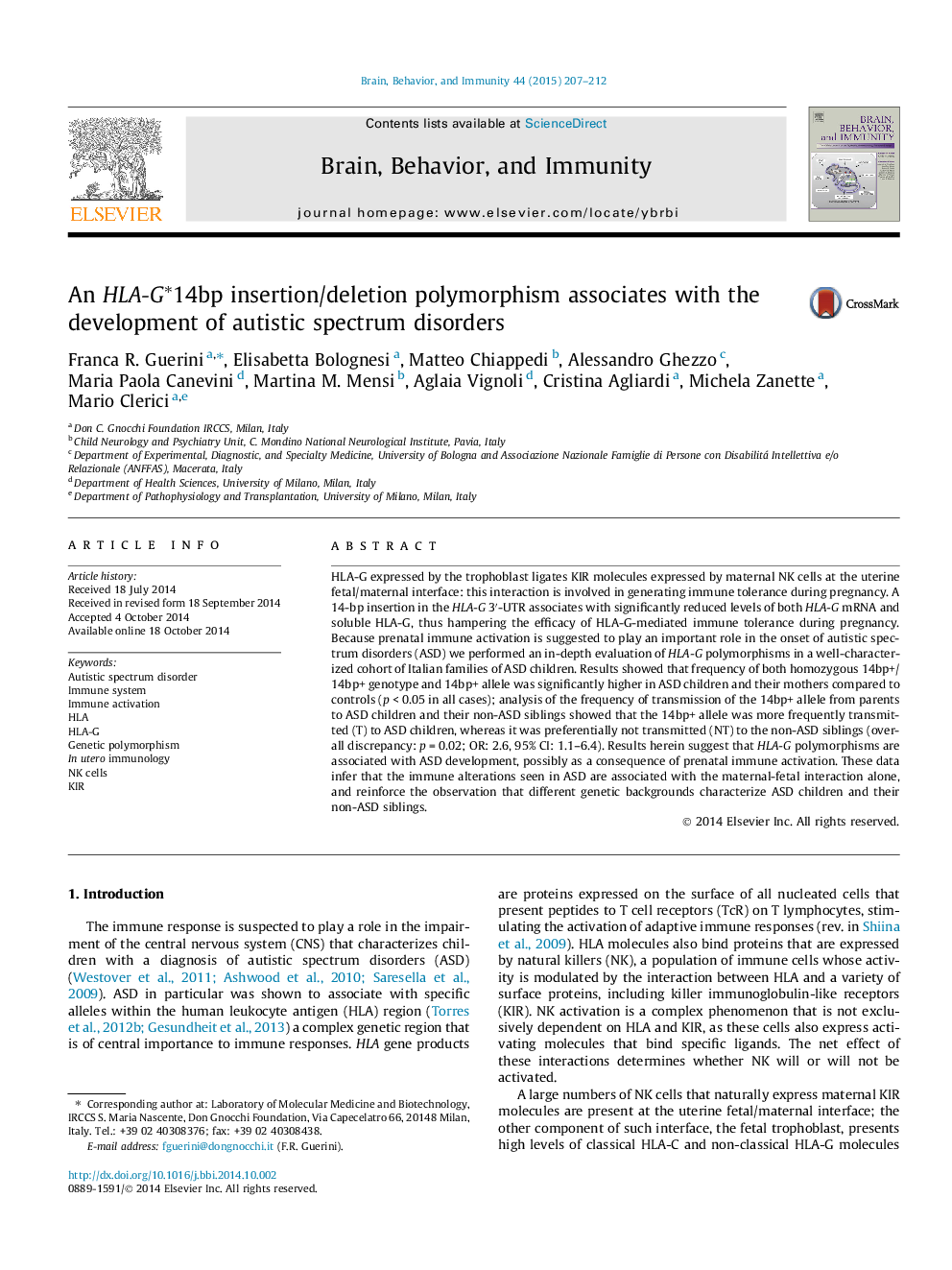| Article ID | Journal | Published Year | Pages | File Type |
|---|---|---|---|---|
| 7281409 | Brain, Behavior, and Immunity | 2015 | 6 Pages |
Abstract
HLA-G expressed by the trophoblast ligates KIR molecules expressed by maternal NK cells at the uterine fetal/maternal interface: this interaction is involved in generating immune tolerance during pregnancy. A 14-bp insertion in the HLA-G 3â²-UTR associates with significantly reduced levels of both HLA-G mRNA and soluble HLA-G, thus hampering the efficacy of HLA-G-mediated immune tolerance during pregnancy. Because prenatal immune activation is suggested to play an important role in the onset of autistic spectrum disorders (ASD) we performed an in-depth evaluation of HLA-G polymorphisms in a well-characterized cohort of Italian families of ASD children. Results showed that frequency of both homozygous 14bp+/14bp+ genotype and 14bp+ allele was significantly higher in ASD children and their mothers compared to controls (p < 0.05 in all cases); analysis of the frequency of transmission of the 14bp+ allele from parents to ASD children and their non-ASD siblings showed that the 14bp+ allele was more frequently transmitted (T) to ASD children, whereas it was preferentially not transmitted (NT) to the non-ASD siblings (overall discrepancy: p = 0.02; OR: 2.6, 95% CI: 1.1-6.4). Results herein suggest that HLA-G polymorphisms are associated with ASD development, possibly as a consequence of prenatal immune activation. These data infer that the immune alterations seen in ASD are associated with the maternal-fetal interaction alone, and reinforce the observation that different genetic backgrounds characterize ASD children and their non-ASD siblings.
Keywords
Related Topics
Life Sciences
Immunology and Microbiology
Immunology
Authors
Franca R. Guerini, Elisabetta Bolognesi, Matteo Chiappedi, Alessandro Ghezzo, Maria Paola Canevini, Martina M. Mensi, Aglaia Vignoli, Cristina Agliardi, Michela Zanette, Mario Clerici,
